 W
WChristopher Wolfgang Alexander is a widely influential British-American architect and design theorist, and currently emeritus professor at the University of California, Berkeley. His theories about the nature of human-centered design have affected fields beyond architecture, including urban design, software, sociology and others. Alexander has designed and personally built over 100 buildings, both as an architect and a general contractor.
 W
WDonald Sidney Appleyard was an English-American urban designer and theorist, teaching at the University of California, Berkeley.
 W
WWalter Bendix Schönflies Benjamin was a German Jewish philosopher, cultural critic and essayist. An eclectic thinker, combining elements of German idealism, Romanticism, Western Marxism, and Jewish mysticism, Benjamin made enduring and influential contributions to aesthetic theory, literary criticism, and historical materialism. He was associated with the Frankfurt School, and also maintained formative friendships with thinkers such as playwright Bertolt Brecht and Kabbalah scholar Gershom Scholem. He was also related to German political theorist and philosopher Hannah Arendt through her first marriage to Benjamin's cousin, Günther Anders.
 W
WMarshall Howard Berman (1940–2013) was an American philosopher and Marxist humanist writer. He was a Distinguished Professor of Political Science at The City College of New York and at the Graduate Center of the City University of New York, teaching political philosophy and urbanism.
 W
WWalter Edward Block is an American Austrian School economist and anarcho-capitalist theorist. He currently holds the Harold E. Wirth Eminent Scholar Endowed Chair in Economics at the J. A. Butt School of Business at Loyola University New Orleans, and is a senior fellow of the non-profit think-tank Ludwig von Mises Institute in Auburn, Alabama. He is best known for his 1976 book Defending the Undefendable, which takes contrarian positions in defending acts which are illegal or disreputable but Block argues are actually victimless crimes or benefit the public.
 W
WRobby Cantarutti is an Italian architect and industrial designer from Venice and the best known practitioner of Italian Rationalism.
 W
WManuel Castells Oliván is a Spanish sociologist especially associated with research on the information society, communication and globalization. In January 2020, he was appointed Minister of Universities in the Sánchez II Government of Spain.
 W
WIldefons Cerdà i Sunyer was the progressive Catalan Spanish urban planner who designed the 19th-century "extension" of Barcelona called the Eixample. He was a founder of modern town planning who coined the new word “urbanization”.
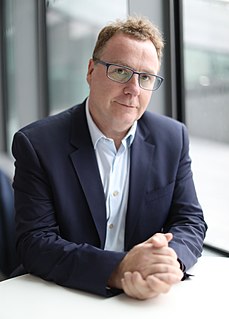 W
WGreg Clark, an urbanist, is an author, global advisor, chairman and non-executive director. Clark has advised more than 100 cities, 20 national governments and a wide array of bodies including the OECD, Brookings Institution, the World Bank and the Urban Land Institute (ULI) on strategies for city development and investment. He also advises global investors and corporate service companies on how to align with city leaders.
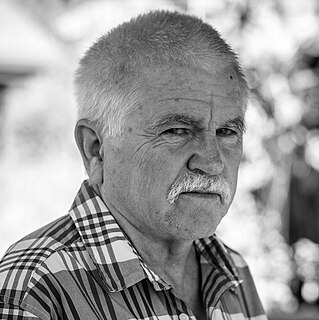 W
WMike Davis is an American writer, political activist, urban theorist, and historian. He is best known for his investigations of power and social class in his native Southern California. His most recent book is Set the Night on Fire: L.A. in the Sixties, co-authored by Jon Wiener.
 W
WMatthew Desmond is an American sociologist and the Maurice P. During Professor of Sociology at Princeton University, where he is also the principal investigator of the Eviction Lab.
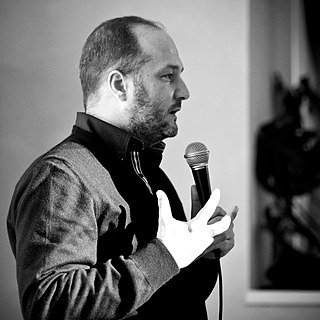 W
WJoseph Di Pasquale is an Italian architect.
 W
WFriedrich Engels, sometimes anglicised as Frederick Engels, was a German philosopher, historian, political scientist and revolutionary socialist. He was also a businessman, journalist and political activist, whose father was an owner of large textile factories in Salford and Barmen, Prussia.
 W
WFrantz Omar Fanon, also known as Ibrahim Frantz Fanon, was a French West Indian psychiatrist and political philosopher from the French colony of Martinique. His works have become influential in the fields of post-colonial studies, critical theory and Marxism. As well as being an intellectual, Fanon was a political radical, Pan-Africanist, and Marxist humanist concerned with the psychopathology of colonization and the human, social, and cultural consequences of decolonization.
 W
WRichard L. Florida is an American urban studies theorist focusing on social and economic theory. He is a professor and head of the Martin Prosperity Institute at the Rotman School of Management at the University of Toronto and a Distinguished Fellow at NYU's School of Professional Studies.
 W
WSir Patrick Geddes was a Scottish biologist, sociologist, geographer, philanthropist and pioneering town planner. He is known for his innovative thinking in the fields of urban planning and sociology.
 W
WPaul Goodman (1911–1972) was an American author and public intellectual best known for his 1960s works of social criticism. Born to a Jewish family in New York City, Goodman was raised by his aunts and sister and attended City College of New York. As an aspiring writer, he wrote and published poems and fiction before attending graduate school in Chicago. He returned to writing in New York City and took sporadic magazine writing and teaching jobs, many of which he lost for his outward bisexuality and World War II draft resistance. Goodman discovered anarchism and wrote for libertarian journals. He became one of the founders of gestalt therapy and took patients through the 1950s while continuing to write prolifically. His 1960 book of social criticism, Growing Up Absurd, established his importance as a mainstream cultural theorist. Goodman became known as "the philosopher of the New Left" and his anarchistic disposition was influential in 1960s counterculture and the free school movement. His celebrity did not endure far beyond his life, but Goodman is remembered for his principles, outré proposals, and vision of human potential.
 W
WPercival Goodman was an American urban theorist and architect who designed more than 50 synagogues between 1948 and 1983. He has been called the "leading theorist" of modern synagogue design, and "the most prolific architect in Jewish history."
 W
WVictor David Gruen, born Viktor David Grünbaum, was an Austrian-born architect best known as a pioneer in the design of shopping malls in the United States. He is also noted for his urban revitalization proposals, described in his writings and applied in master plans such as for Fort Worth, Texas (1955), Kalamazoo, Michigan (1958) and Fresno, California (1965). An advocate of prioritizing pedestrians over cars in urban cores, he was also the designer of the first outdoor pedestrian mall in the United States, the Kalamazoo Mall.
 W
WSir Peter Geoffrey Hall, FBA was an English town planner, urbanist and geographer. He was the Bartlett Professor of Planning and Regeneration at The Bartlett, University College London and president of both the Town and Country Planning Association and the Regional Studies Association. Hall was one of the most prolific and influential urbanists of the twentieth century.
 W
WDavid W. Harvey is a British-born Marxist economic geographer and Distinguished Professor of anthropology and geography at the Graduate Center of the City University of New York (CUNY). He received his PhD in geography from the University of Cambridge in 1961. Harvey has authored many books and essays that have been prominent in the development of modern geography as a discipline. He is a proponent of the idea of the right to the city.
 W
WRonald J. Horvath has made contributions to the study of colonialism, African development, and urban geography of Sydney, Los Angeles, Detroit and Addis Ababa.
 W
WSir Ebenezer Howard was an English urban planner and founder of the garden city movement, known for his publication To-Morrow: A Peaceful Path to Real Reform (1898), the description of a utopian city in which people live harmoniously together with nature. The publication resulted in the founding of the garden city movement, and the building of the first garden city, Letchworth Garden City, commenced in 1903.
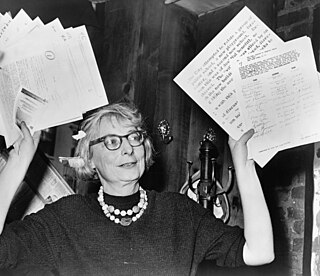 W
WJane Jacobs was an American-Canadian journalist, author, and activist who influenced urban studies, sociology, and economics. Her book The Death and Life of Great American Cities (1961) argued that "urban renewal"/"slum clearance" did not respect the needs of city-dwellers.
 W
WDaria Andreyevna Khaltourina is a Russian sociologist, anthropologist, demographer, and a public figure. She is the head of the Group of the Monitoring of Global and Regional Risks of the Russian Academy of Sciences, co-chairperson of the Russian Coalition for Alcohol Control, as well as the Russian Coalition for Tobacco Control. She is a laureate of the Russian Science Support Foundation Award in "The Best Economists of the Russian Academy of Sciences" nomination (2006).
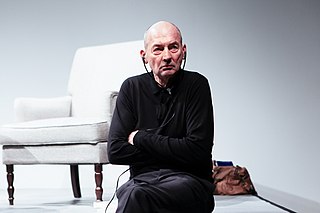 W
WRemment Lucas Koolhaas is a Dutch architect, architectural theorist, urbanist and Professor in Practice of Architecture and Urban Design at the Graduate School of Design at Harvard University. He is often cited as a representative of Deconstructivism and is the author of Delirious New York: A Retroactive Manifesto for Manhattan.
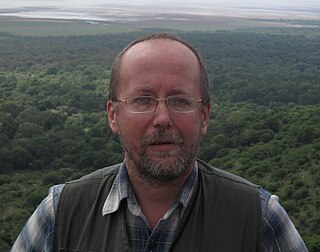 W
WAndrey Vitalievich Korotayev is a Russian anthropologist, economic historian, comparative political scientist, demographer and sociologist, with major contributions to world-systems theory, cross-cultural studies, Near Eastern history, Big History, and mathematical modelling of social and economic macrodynamics.
 W
WLéon Krier CVO is a Luxembourgish architect, architectural theorist and urban planner, a prominent critic of architectural Modernism and advocate of New Traditional Architecture and New Urbanism. Krier combines an international architecture & planning practice with writing and teaching. He is well-known for his master plan for Poundbury, in Dorset, England. He is the younger brother of architect Rob Krier.
 W
WLucien Kroll is a Belgian architect known for his projects involving participation by the future inhabitants of the buildings. His most famous work is the Medical Faculty Housing at the University of Leuven, Belgium, from 1970–76. These buildings "aroused widespread controversy in the early 1970s, their fragmented and improvisational appearance— the result of a deliberate participatory design process— in stark contrast to the adjacent massive and repetitive hospital, the embodiment of a centralized bureaucracy."
 W
WJames Howard Kunstler is a far-right American author, social critic, public speaker, and blogger. He is best known for his books The Geography of Nowhere (1994), a history of American suburbia and urban development, The Long Emergency (2005), and Too Much Magic (2012). In The Long Emergency he imagines peak oil and oil depletion resulting in the end of industrialized society, forcing Americans to live in smaller-scale, localized, agrarian communities. In World Made by Hand he branches into a science fiction depiction of this future world.
 W
WCharles-Édouard Jeanneret, known as Le Corbusier, was a Swiss-French architect, designer, painter, urban planner, writer, and one of the pioneers of what is now regarded as modern architecture. He was born in Switzerland and became a French citizen in 1930. His career spanned five decades, and he designed buildings in Europe, Japan, India, and North and South America.
 W
WHenri Lefebvre was a French Marxist philosopher and sociologist, best known for pioneering the critique of everyday life, for introducing the concepts of the right to the city and the production of social space, and for his work on dialectics, alienation, and criticism of Stalinism, existentialism, and structuralism. In his prolific career, Lefebvre wrote more than sixty books and three hundred articles. He founded or took part in the founding of several intellectual and academic journals such as Philosophies, La Revue Marxiste, Arguments, Socialisme ou Barbarie, Espaces et Sociétés.
 W
WKevin Andrew Lynch was an American urban planner and author. He is known for his work on the perceptual form of urban environments and was an early proponent of mental mapping. His most influential books include The Image of the City (1960), a seminal work on the perceptual form of urban environments, and What Time is This Place? (1972), which theorizes how the physical environment captures and refigures temporal processes.
 W
WPeter Marcuse is a German-American lawyer and professor emeritus of urban planning.
 W
WIan L. McHarg was a Scottish landscape architect and writer on regional planning using natural systems. McHarg was one of the most influential persons in the environmental movement who brought environmental concerns into broad public awareness and ecological planning methods into the mainstream of landscape architecture, city planning and public policy. He was the founder of the department of landscape architecture at the University of Pennsylvania in the United States. His 1969 book Design with Nature pioneered the concept of ecological planning. It continues to be one of the most widely celebrated books on landscape architecture and land-use planning. In this book, he set forth the basic concepts that were to develop later in geographic information systems.
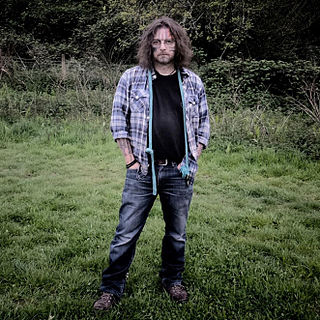 W
WIan McKay is a British writer, art critic, publisher and translator. A former editor of Contemporary Art magazine, and the founder-editor of The Journal of Geography and Urban Research, throughout the 1990s he was best known for his writings on the arts of Eastern Europe, being cited as the first British art critic to emphasize the negative impact of the western art market in that region. Throughout the 1990s and early-2000s, he was a contributor to a wide range of art journals, as well as writing on subjects relating to photography, cinema, and music. Since 2007 his publishing activities have mainly centred on UK Rural Affairs, and the environment however. Though periodically he continues to publish works of art criticism, his most recent publications concern social justice in rural Britain, as well as environmental conservation in the wider European sphere. He has also worked as an academic in several UK universities.
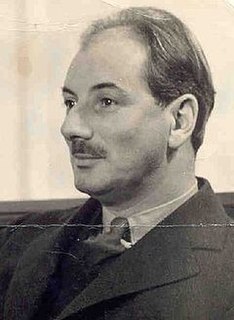 W
WLewis Mumford was an American historian, sociologist, philosopher of technology, and literary critic. Particularly noted for his study of cities and urban architecture, he had a broad career as a writer. Mumford made signal contributions to social philosophy, American literary and cultural history and the history of technology. Mumford was influenced by the work of Scottish theorist Sir Patrick Geddes and worked closely with his associate the British sociologist Victor Branford.
 W
WMikhail Aleksandrovich Okhitovich (1896—1937) was a Bolshevik sociologist, town planner and Constructivist architectural theorist, most famous for his 'Disurbanist' proposals of 1929-30.
 W
WJamie Peck FRSC FAcSS is Canada Research Chair in Urban & Regional Political Economy and Professor of Geography at the University of British Columbia, Canada. He is the Managing Editor of Environment and Planning A and the convenor of the Summer Institute in Economic Geography.
 W
WClarence Arthur Perry was an American urban planner, sociologist, author, and educator. Perry devised the neighbourhood unit plan, a residential community scheme disseminated through the Regional Plan of New York and Its Environs in 1929 that influenced planning in US cities.
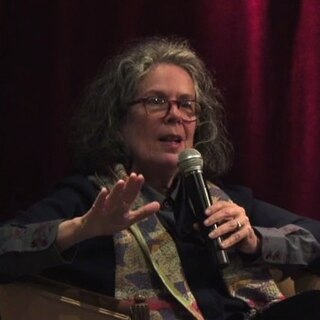 W
WKristin Ross is a professor emeritus of comparative literature at New York University. She is primarily known for her work on French literature and culture of the 19th, 20th, and 21st centuries.
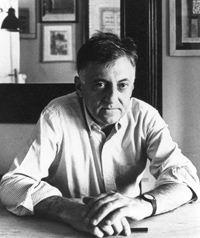 W
WAldo Rossi was an Italian architect and designer who achieved international recognition in four distinct areas: architectural theory, drawing and design and also product design. He was one of the leading exponents of the postmodern movement.
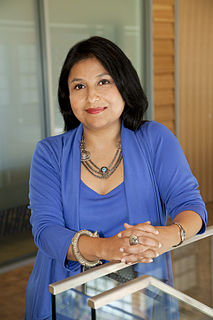 W
WAnanya Roy is a scholar of international development and global urbanism. Born in Calcutta, India (1970), Roy is Professor and Meyer and Renee Luskin Chair in Inequality and Democracy at the UCLA Luskin School of Public Affairs. She has been a professor of City and Regional Planning and Distinguished Chair in Global Poverty and Practice at the University of California, Berkeley. She holds a Bachelor of Comparative Urban Studies (1992) degree from Mills College, and Master of City Planning (1994) and Doctor of Philosophy (1999) degrees from the Department of City and Regional Planning at the University of California at Berkeley.
 W
WMoshe Safdie is an Israeli-Canadian architect, urban designer, educator, theorist, and author. He is most identified with designing Marina Bay Sands and Jewel Changi Airport, as well as his debut project Habitat 67, which was originally conceived as his Master's thesis while studying at McGill University and paved the way for his international career.
 W
WSanjeev Sanyal is an Indian economist and author. Currently, he is the Principal Economic Adviser in the Ministry of Finance, Government of India. A Rhodes Scholar and Eisenhower Fellow He was Deutsche Bank's Global Strategist and a Managing Director till 2015. He is also the author of several books including The Indian Renaissance: India's Rise after a Thousand Years of Decline, Land of the Seven Rivers: A Brief History of India's Geography, The Incredible History of India's Geography, The Ocean of Churn: How human history was shaped by the Indian Ocean and Life Over Two Beers.
 W
WDenise Scott Brown is an American architect, planner, writer, educator, and principal of the firm Venturi, Scott Brown and Associates in Philadelphia. Scott Brown and her husband and partner, Robert Venturi, are regarded as among the most influential architects of the twentieth century, both through their architecture and planning, and theoretical writing and teaching.
 W
WDonald Curran Shoup is a distinguished research professor of urban planning at UCLA, and a Georgist economist. His 2005 book The High Cost of Free Parking identifies the negative repercussions of off-street parking requirements and relies heavily on 'Georgist' insights about optimal land use and rent distribution. In 2015, the American Planning Association awarded Shoup the "National Planning Excellence Award for a Planning Pioneer."
 W
WEdward William Soja was a self-described "urbanist," a noted postmodern political geographer and urban theorist on the planning faculty at UCLA, where he was Distinguished Professor of Urban Planning, and the London School of Economics. He had a Ph.D. from Syracuse University. His early research focused on planning in Kenya, but Soja came to be known as the world's leading spatial theorist with a distinguished career writing on spatial formations and social justice.
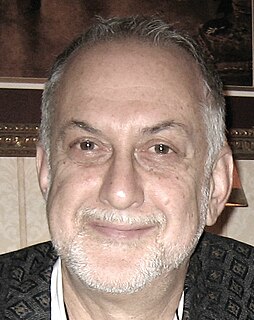 W
WMichael David Sorkin was an American architectural and urban critic, designer, and educator. He was considered to be "one of architecture’s most outspoken public intellectuals," a polemical voice in contemporary culture and the design of urban places at the turn of the twenty-first century. Sorkin first rose to prominence as an architectural critic for the Village Voice in New York City, a post which he held for a decade throughout the 1980s. In the ensuing years, he taught at prominent universities around the world, practiced through his eponymous firm, established a nonprofit book press, and directed the urban design program at the City College of New York. He died at age 71 during the COVID-19 pandemic due to complications brought on by COVID-19.
 W
WProfessor emeritus Hugh Stretton AC was an Australian historian who wrote books on politics, urban planning and economics, and a Rhodes Scholar. He was a key figure in the development and implementation of government policies affecting cities, particularly during the Whitlam Government.
 W
WFerdinand Tönnies was a German sociologist, economist and philosopher. He was a major contributor to sociological theory and field studies, best known for his distinction between two types of social groups, Gemeinschaft and Gesellschaft. He co-founded the German Society for Sociology together with Max Weber and Georg Simmel and many other founders. He was president of the society from 1909 to 1934, after which he was ousted for having criticized the Nazis. Tönnies was considered the first German sociologist proper, published over 900 works and contributed to many areas of sociology and philosophy.
 W
WHenrik Bjørn Valeur is a Danish architect-urbanist, founder and creative director of UiD (Denmark) and UiD Shanghai Co., Ltd (China), curator of CO-EVOLUTION: Danish/Chinese Collaboration on Sustainable Urban Development in China, which was awarded the Golden Lion at the Venice Biennale of Architecture in 2006, and author of the book India: the Urban Transition - a Case Study of Development Urbanism (2014), which is based on his experiences teaching, researching and practicing in India.
 W
WRobert Charles Venturi Jr. was an American architect, founding principal of the firm Venturi, Scott Brown and Associates, and one of the major architectural figures of the twentieth century.
 W
WLoïc Wacquant is a sociologist and social anthropologist, specializing in urban sociology, urban poverty, racial inequality, the body, social theory and ethnography.
 W
WWilliam Hollingsworth "Holly" Whyte was an American urbanist, organizational analyst, journalist and people-watcher. He identified the elements that create vibrant public spaces within the city and filmed a variety of urban plazas in New York City in 1970s. After his book about corporate culture The Organization Man (1956) sold over two million copies, Whyte turned his attention to the study of human behaviour in urban settings. He published several books on the topic, including The Social Life of Small Urban Spaces (1980).
 W
WLouis Wirth was an American sociologist and member of the Chicago school of sociology. His interests included city life, minority group behavior, and mass media, and he is recognised as one of the leading urban sociologists.